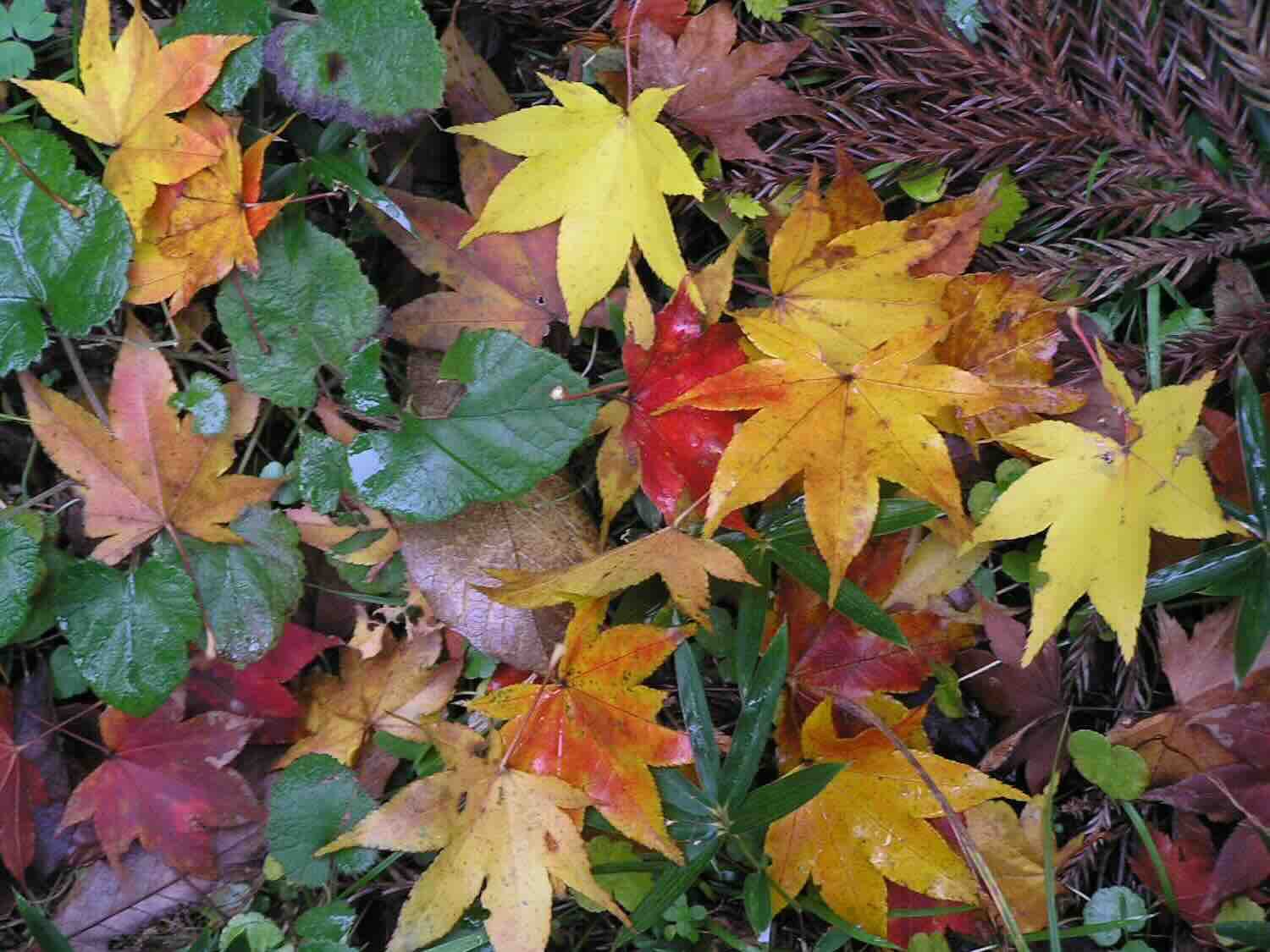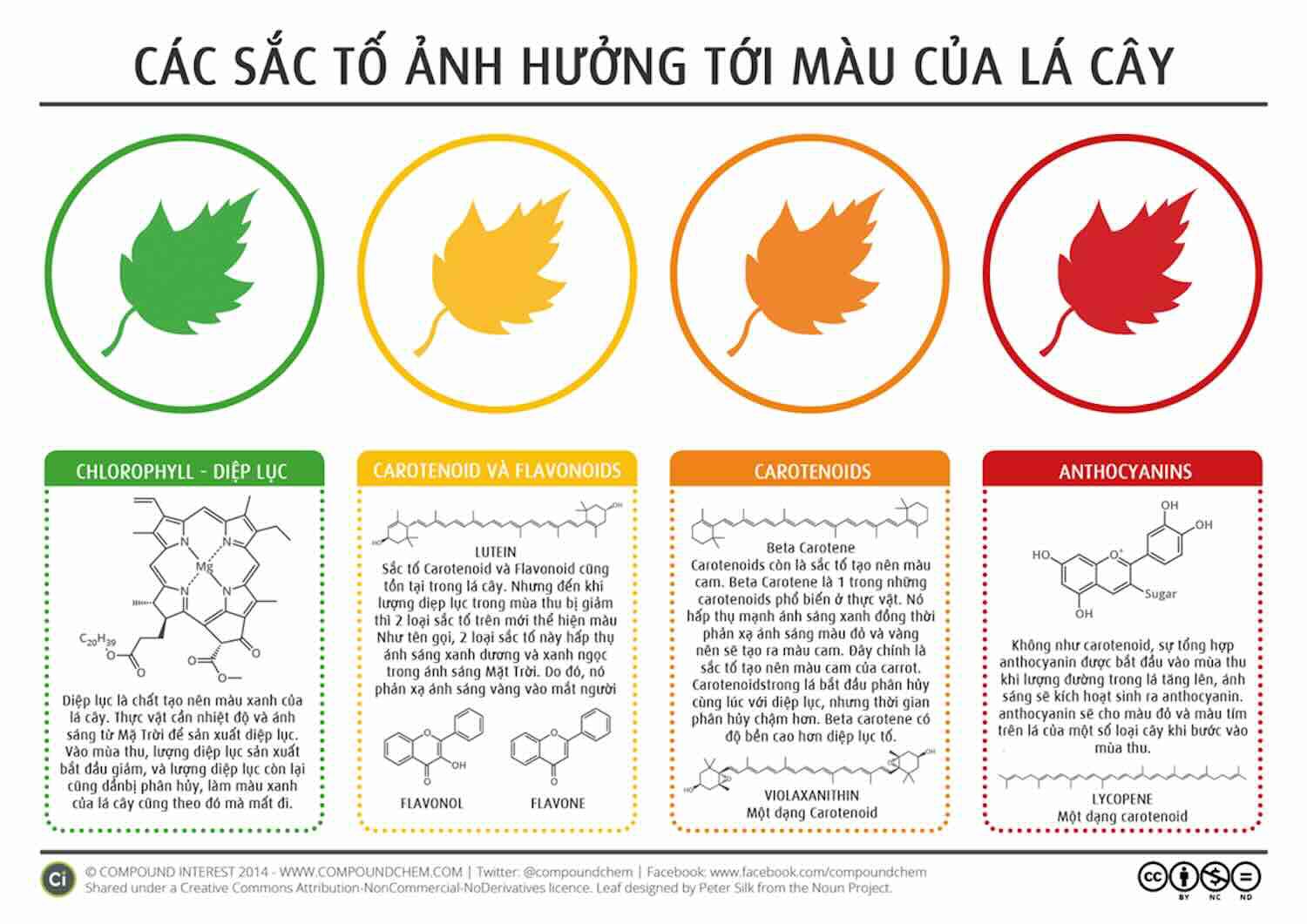Vn-Z.vn November 26, 2023, November 2023 is almost over, although the feeling of autumn and winter in the North is not really clear. This year the cold air has not arrived yet. In nature . Normally, when you are preparing for winter, you will feel the change in the weather. This change is most evident in plants, especially their leaves.
Today let's learn about some issues on plants.

Wiki photo
1. Why are most leaves green?
In fact, only plants themselves do not have the ability to rapidly change their spatial position through "moving" in search of food and adapting to changes in the environment and climate. climate, environment. To be able to obtain the energy necessary for development and maintenance of life activities such as growth, they must rely on and utilize energy from the Sun.
The process of converting energy from the Sun into the energy needed by plants is called photosynthesis, which is the main source of energy for plants. To use solar energy, plants must first be able to absorb solar energy. Pigments in leaves that can absorb visible light are the most important weapons and equipment.
In general, among the various pigments in leaves, the one with the highest concentration is chlorophyll. It mainly absorbs blue-violet and red-orange light, while green light is not absorbed by it but is continuously reflected or passes through leaves, so most of the leaves we see have green.
2. Why can leaves change color?
As mentioned earlier, the green color of leaves is mainly influenced by chlorophyll. In other words, the amount of chlorophyll will determine the color change of the leaves.
However, chlorophyll is not a stable compound and plants need sunlight and a warm climate to maintain their chlorophyll content. Furthermore, in addition to chlorophyll, leaves also contain carotenoids such as lutein and carotene, as well as other pigments, such as a special pigment called anthocyanin, which is a color-changing “chameleon”. When exposed to acids, it turns red, turns blue when exposed to acids and alkalis.

Many studies have shown that external environmental factors such as light, temperature, and humidity can affect physiological and biochemical processes such as photosynthesis, water metabolism, and mineral metabolism in plants. animals, thereby causing a change in the ratio of different pigments in the leaves.
For example, when autumn comes, the days become shorter and the temperature gradually decreases. Plants sense the changing climate from autumn, so the amount of chlorophyll synthesized in leaves gradually becomes less than the amount decomposed until it disappears. As the proportion of other pigments in the leaf gradually increases, the leaf begins to change color.
In addition, in cold countries, to avoid the risk of frostbite, reduce energy loss, and not consume a lot of water in an increasingly dry environment, plants will choose to remove leaves immediately after they leave. discoloration, leading to leaf loss.
3. Why are leaves different colors?
After the green color of the leaves gradually disappears for many reasons, they often turn into many different splendid colors such as yellow, yellow, orange, brown, purple and red. All this is due to different pigments in the leaves.
One is chlorophyll, which, as mentioned earlier, makes leaves look green. The second is carotenoids, which mainly contain two pigments, lutein and carotene, the former being yellow and the latter being orange. Their function is similar to chlorophyll, but they play a small role in photosynthesis. Third, anthocyanin, also known as anthocyanidins, is a natural water-soluble colorant found in many plants, is colorless, turns red when exposed to acid and turns blue when exposed to alkali.
When the chlorophyll in the leaves has not been completely lost, it will be light green or yellow-green. When the leaves contain anthocyanins and residual chlorophyll, they will be brown. When the leaves contain anthocyanins and carotenoids, they will be brown or orange. color.
That means, when the chlorophyll content decreases, the content of substances such as yellow flavonoids, orange carotenes, purple-red anthocyanins and brown tannins will increase. , and inside the leaves of different plants, the ratio of different pigments increases and increases, different so there are different colors.
In addition, the color changes of the leaves of some plants are synchronous, while the color changes of the leaves of some plants have certain differences, and even changes on the same leaf are not synchronous. best.
Of course, in addition to the main pigments that affect leaf color, there are many other factors that can also cause leaf color to change. Such as temperature, humidity, pH value and even soil conditions, ingredients, etc.
Today let's learn about some issues on plants.

Wiki photo
In fact, only plants themselves do not have the ability to rapidly change their spatial position through "moving" in search of food and adapting to changes in the environment and climate. climate, environment. To be able to obtain the energy necessary for development and maintenance of life activities such as growth, they must rely on and utilize energy from the Sun.
The process of converting energy from the Sun into the energy needed by plants is called photosynthesis, which is the main source of energy for plants. To use solar energy, plants must first be able to absorb solar energy. Pigments in leaves that can absorb visible light are the most important weapons and equipment.
In general, among the various pigments in leaves, the one with the highest concentration is chlorophyll. It mainly absorbs blue-violet and red-orange light, while green light is not absorbed by it but is continuously reflected or passes through leaves, so most of the leaves we see have green.
2. Why can leaves change color?
As mentioned earlier, the green color of leaves is mainly influenced by chlorophyll. In other words, the amount of chlorophyll will determine the color change of the leaves.
However, chlorophyll is not a stable compound and plants need sunlight and a warm climate to maintain their chlorophyll content. Furthermore, in addition to chlorophyll, leaves also contain carotenoids such as lutein and carotene, as well as other pigments, such as a special pigment called anthocyanin, which is a color-changing “chameleon”. When exposed to acids, it turns red, turns blue when exposed to acids and alkalis.

For example, when autumn comes, the days become shorter and the temperature gradually decreases. Plants sense the changing climate from autumn, so the amount of chlorophyll synthesized in leaves gradually becomes less than the amount decomposed until it disappears. As the proportion of other pigments in the leaf gradually increases, the leaf begins to change color.
In addition, in cold countries, to avoid the risk of frostbite, reduce energy loss, and not consume a lot of water in an increasingly dry environment, plants will choose to remove leaves immediately after they leave. discoloration, leading to leaf loss.
3. Why are leaves different colors?
After the green color of the leaves gradually disappears for many reasons, they often turn into many different splendid colors such as yellow, yellow, orange, brown, purple and red. All this is due to different pigments in the leaves.
One is chlorophyll, which, as mentioned earlier, makes leaves look green. The second is carotenoids, which mainly contain two pigments, lutein and carotene, the former being yellow and the latter being orange. Their function is similar to chlorophyll, but they play a small role in photosynthesis. Third, anthocyanin, also known as anthocyanidins, is a natural water-soluble colorant found in many plants, is colorless, turns red when exposed to acid and turns blue when exposed to alkali.
When the chlorophyll in the leaves has not been completely lost, it will be light green or yellow-green. When the leaves contain anthocyanins and residual chlorophyll, they will be brown. When the leaves contain anthocyanins and carotenoids, they will be brown or orange. color.
That means, when the chlorophyll content decreases, the content of substances such as yellow flavonoids, orange carotenes, purple-red anthocyanins and brown tannins will increase. , and inside the leaves of different plants, the ratio of different pigments increases and increases, different so there are different colors.
In addition, the color changes of the leaves of some plants are synchronous, while the color changes of the leaves of some plants have certain differences, and even changes on the same leaf are not synchronous. best.
Of course, in addition to the main pigments that affect leaf color, there are many other factors that can also cause leaf color to change. Such as temperature, humidity, pH value and even soil conditions, ingredients, etc.
